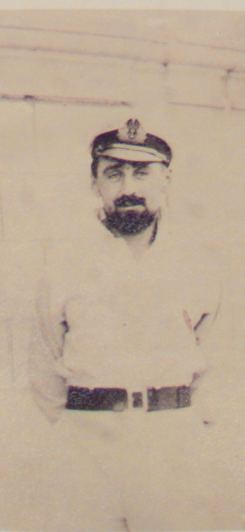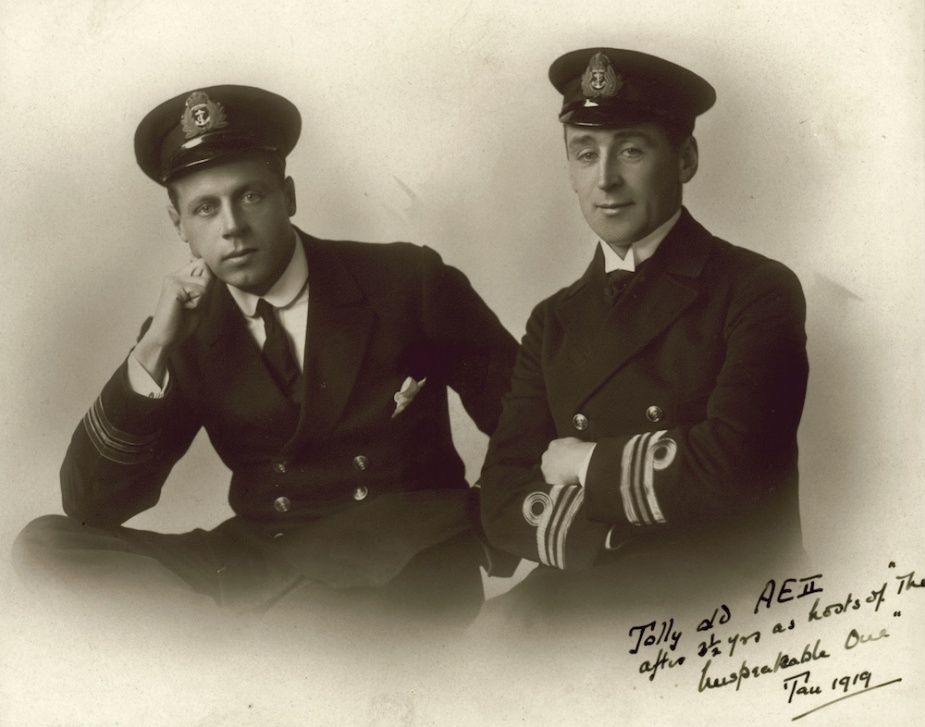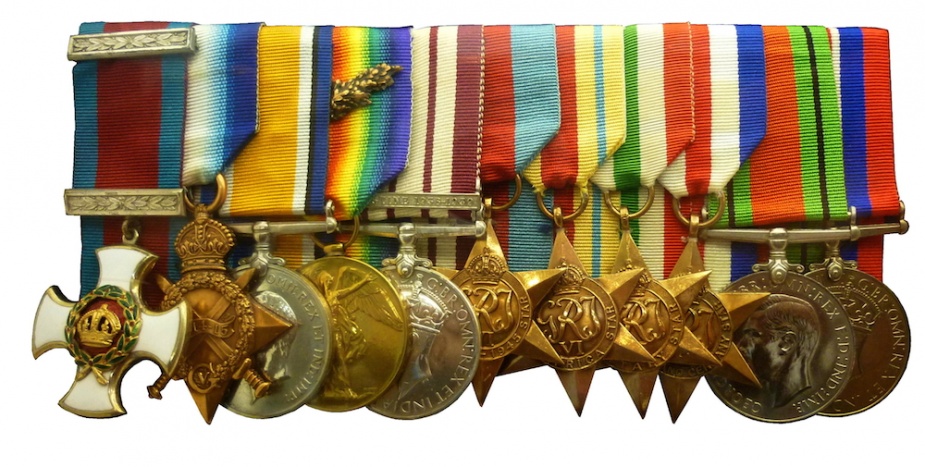Lieutenant Commander Henry Hugh Gordon Dacre Stoker

Henry Hugh Gordon Dacre Stoker was born in Dublin, Ireland on 2 February 1885, the fourth of six children to Dr William Stoker and Jane (Jennie) Martin Ross Stoker (née Todd). Stoker claimed later in life that the name Dacre was added to appease his wealthy godfather. Stoker was educated in Dublin and joined the Royal Navy as a 14-year old Cadet on 15 January 1900. His initial service was in the training ship HMS Britannia, moored in the river near Dartmouth. While an average student, he did excel at sport, particularly rugby and tennis, and he continued to play the latter well into his seventies. He was promoted to Midshipman on 30 May 1901 and posted briefly to the battleship HMS Jupiter, part of the Channel Fleet, before joining the battleship HMS Implacable which served in the Mediterranean.
Stoker was promoted to Sub Lieutenant on 30 July 1904, and left Implacable to undertake courses and examinations at the Naval College at Greenwich. After completing his training at Greenwich he was sent to the armoured cruiser HMS Drake which was operating in the western Atlantic, off the coast of Canada and the United States. Stoker became interested in the submarine service and applied to join this relatively new branch of the Navy. In October 1906, after a years service in Drake, he was selected for submarine training and dispatched to the submarine depot ship HMS Thames at Portsmouth. Stoker was promoted to Lieutenant on 31 December 1906.
Stoker was very much a free spirit and reveled in the freedom that the submarine service offered. He completed his submarine training in October 1907 and in January 1909 was given command of the submarine HMS A10. On 19 December 1908, at Exeter, Stoker married Olive Joan Violet Gwendoline Leacock, daughter of Colonel Schuler Leacock of the Bengal Cavalry. It was not a happy marriage and the couple were divorced in early 1919.
In January 1910 he took command of the submarine HMS B8 which, in August 1911, became part of a flotilla of three submarines based in Gibraltar; these were the first RN submarines to serve outside of Britain. In 1913 Stoker volunteered to serve on loan with the RAN as Commanding Officer of one of the fledgling navy's new submarines. He was selected, and on 7 November 1913 was loaned to the RAN as the Commanding Officer of the new submarine HMAS AE2.
AE2 had been built at Barrow-in-Furness in 1913 and commissioned on 28 February 1914. On 2 March 1914, AE2 and her sister ship AE1 (Commanded by Lieutenant Thomas Besant, RN) sailed from Portsmouth on their delivery voyage to Australia. The two submarines arrived in Sydney in May 1914, having completed the then longest ocean transit of any submarine. After the outbreak of war both submarines were involved in the capture of German New Guinea in September 1914, during which time AE1 disappeared and was presumed lost with all hands. AE2 was offered to the Royal Navy for service, and in December 1914 Stoker took his submarine back to the northern hemisphere. In January 1915 AE2 was serving with the British submarine flotilla operating in the Mediterranean. Stoker was promoted to Lieutenant Commander on 31 December 1914.
On the morning of 25 April 1915, Stoker took AE2 through the Dardanelles (75km in length), and after evading Turkish minefields, shore batteries and patrolling warships she broke through into the Sea of Marmara, thus becoming the first Allied submarine to do so after repeated failures by others. During the transit AE2 torpedoed and damaged a Turkish gunboat. The news of AE2’s success was communicated back to the senior Royal Navy officer, Admiral de Robeck, and soon other British submarines successfully penetrated this heavily defended waterway.
Unfortunately for AE2, her success was short lived. On 30 April 1915, while attempting to rendezvous with another Allied submarine, she was caught on the surface by Turkish gunboats and badly damaged. The AE2’s pressure hull was breached by shellfire, and Stoker ordered his crew to abandon ship while he had scuttling charges detonated to sink the vessel. Stoker's second in command, Lieutenant Geoffrey Haggard, was keen to fight on, but without a deck gun and unable to dive the submarine that action would have caused the unnecessary slaughter of the crew. Stoker ordered a white tablecloth to be waved at the Turkish warships, indicating he was surrendering, but this was in reality to have them cease fire while his men abandoned ship, and bought enough time for AE2 to sink and prevented the capture of the vessel.
After their capture the crew of AE2 were held as prisoners of war by the Turks. The officers were separated from the men, and Stoker spent the next three and half years in various Turkish prisons and internment camps. While at Afion Kara Hissar (Afyon) in March 1916, he escaped and was on the run for 18 days before he was recaptured and imprisoned in Constantinople. In February 1917 he was moved to an internment camp at Yozgad, but later returned to Afion until the war ended in November 1918. Stoker was repatriated to England in December 1918 and reverted to Royal Navy service on 9 February 1919.
Stoker was awarded the Distinguished Service Order (London Gazette, 22 April 1919) ‘In recognition of his gallantry in making the passage of the Dardanelles in command of HM Australian Submarine AE2 on 25 April 1915’. Six months later he was mentioned in dispatches (London Gazette, 17 October 1919) ‘For valuable services in HM Australian Submarine AE2 in the prosecution of the war’.
He was given command of the new submarine HMS K9 on 10 February 1919, and was promoted to Commander on 31 December 1919. In 1920 Stoker was offered command of the submarine depot ship HMS Royal Arthur but instead, now disillusioned with a naval career, chose to leave the navy and was placed on the retired list on 2 October 1920. Stoker had always been a keen amateur actor and playwright and now pursued this second career.
Stoker commenced acting successfully on the stage in both Britain and the United States. He often played the part of a professional, such a military officer or a doctor. In 1925 his autobiography 'Straws in the Wind' was published by Herbert Jenkins Limited, and in the same year he married a young actress, Dorothie ‘Peg’ Pidcock, at the Savoy Chapel. The two remained together for the next 41 years but there were no children. By the end of the 1920s Stoker was a regular and popular performer in West End plays, and in 1932 commenced radio broadcasts of short dramatic stories. In 1933 he made his first cinema appearance in the movie 'Channel Crossing'. In 1935 he played the part of a naval officer whose ship was sunk in action during World War I in the movie 'Brown on Resolution'. Overall Stoker appeared in eight films from 1933 through to 1948, and was also the business manager of the Apollo Theatre.
When war broke out in 1939, Stoker was recalled to the Royal Navy. In October 1939, with the rank of Acting Captain, he became the Chief of Staff to Rear Admiral RM King, RN (Flag Officer in Command - Belfast), based in the depot ship HMS Caroline at Belfast. In August 1940 Commander Stoker was given command of the coastal forces base HMS Minos at Lowestoft in Southern England, which was the home base for harbour defence vessels and small escort craft operating in the English Channel.
In July 1942 Stoker was posted to the Press Division within the Admiralty, where he became a Public Relations Officer providing updates to ship's crews on the progress of the war. In April 1944 he became a staff officer working in the Supreme Headquarters Allied Expeditionary Force, but after the D-Day landings returned to his Public Relations role in the Admiralty. In January 1945, as an Acting Captain, he commenced working in the Service Conditions Department in the Admiralty.
Stoker again retired from the Royal Navy at age 60, in late 1945, and returned to his life as an actor and playwright. He became involved in early television dramas in the 1950s, but now well into his mid-60s, began to take life more easily and devoted more time to sporting pursuits such as golf, tennis and croquet. He was also a member of the exclusive Garrick Club, for gentlemen associated with the theatre, in London’s West End.
Henry Stoker died in London on his 81st birthday on 2 February 1966.




